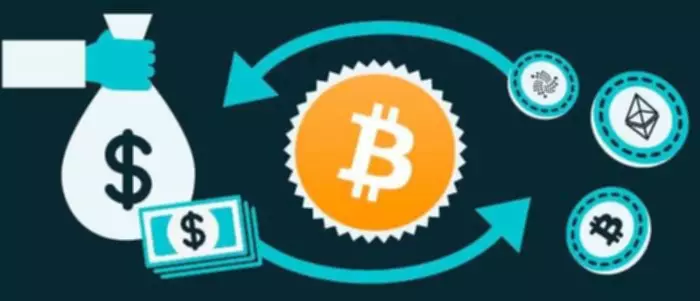
Deep learning personalized recommendation-based construction method of hybrid blockchain model Scientific Reports
In the process of transaction signature and verification in digital signature algorithm, the signature process requires the sender’s private key to encrypt the transaction. There are various staking as a service providers that offer to manage one or more Ethereum validators on your behalf. When using these services, you’re required to provide ETH (32 ETH per validator). In most cases, you get to keep control of your private keys, which is a plus. The catch is that validators who are not reliable or are found to be breaking the rules are punished by having a portion or the entirety of their ETH stake taken away. The comments, opinions, and analyses expressed on Investopedia are for informational purposes online.

No central authority governs Ethereum, and users can transact without restrictions. Every transaction on the Ethereum network is initiated through smart contracts and is verified using the proof-of-work mechanism. Participants get access to immutable transaction records distributed securely across the network. After the merge, you’ll eventually be able to run smart contracts on mainnet Ethereum using proof of stake rather than proof of work. You’ll also be able to withdraw any ETH you’ve staked on Ethereum 2.0.
[clarification needed]and that most proof of stake systems cause less energy consumption in most configurations[specify]. The researchers also noted that the energy consumption https://www.xcritical.in/ for proof-of-stake with permissioned systems that used less validators (than Proof Of Work)? Miners compete to create new blocks filled with processed transactions.
When you validate with your coins, it’s believed to indicate that investors are expecting profits based on the efforts of others. The SEC didn’t specifically mention Ethereum, but the timing led to people getting worried about the future of Ethereum. That’s because new transactions are grouped together in blocks, sometimes of several hundred or more. Then several blocks are chained together to create a record of all the transactions in order.

The major objective in phase 1 is to split the Ethereum blockchain into 64 shard chains. Also, if validators seem dishonest, exhibiting certain behaviors such as submitting contradicting attestations or proposing many blocks in one slot, the network destroys their stakes. Under proof of stake, transactions are confirmed by addresses that have staked—pledged to a smart contract—lots of ETH. Those who have staked more ETH earn proportionately higher rewards. While proof of stake conceptually makes the rich richer, it doesn’t boil the oceans, either.
Data availability remains the fundamental scaling bottleneck facing the Ethereum ecosystem today, as layer-2 activity heats up and new types of applications appear onchain. There’s even a possibility that Ethereum won’t get back to its all-time high ever. The euphoria that characterized the market in 2021 might be a one-hit wonder.
Additionally, the consensus mechanism based on the PBDAG algorithm can use the contribution of network participants as a reference evaluation of authority and reliability on the blockchain network. Then, there is a protocol that governs how honest validators are selected to propose or validate blocks, process transactions and vote for ethereum proof of stake model their view of the head of the chain. One validator is randomly selected in each slot to be the block proposer. Their consensus client requests a bundle of transactions as an ‘execution payload’ from their paired execution client. They wrap this in consensus data to form a block, which they send to other nodes on the Ethereum network.
- These operations can range from block validation and transaction verification to overall network security.
- The Ethereum protocol is an open-source, decentralized network launched in 2015 by Vitalik Buterin.
- Others using proof-of-stake protocols include Tezos, Cardano, Solana, and Algorand.
- The exchange then pools together ETH from multiple users to deploy Ethereum validators.
- Many see the inclusion of shard chains as the official completion of the Ethereum 2.0 upgrade, but it’s not scheduled to happen until 2023.
However, lower fees haven’t come into effect on the Ethereum network yet. Ethereum is the second largest form of cryptocurrency based on market cap, trailing only bitcoin. So when something happens to ethereum, it impacts the entire cryptocurrency space. Since then, he has assisted over 100 companies in a variety of domains, including e-commerce, blockchain, cybersecurity, online marketing, and a lot more.
Merging both ETH1 and the Beacon Chain will transition the network to a secure, efficient, and eco-friendly proof of stake mechanism. After the merge, the PoW mechanism will get shelved entirely, and the validators will produce new blocks through the Beacon Chain PoS model. The proof of work validation process requires mining to solve complex mathematical problems.
If you’re investing in Ethereum and don’t plan to sell in the short term, staking ETH is certainly worth considering to passively grow your ETH holdings. However, there are staking pools that allow users to pool together smaller amounts of ETH. The validation process will transition from proof of work to proof of stake. Miners will be replaced by validators who don’t need to compete with one another to solve complex mathematical problems. Also, the merge will solve Ethereum’s scalability issues and reduce energy consumption by 95%. Many players believe that the merge will impact the price of Ethereum tokens.

According to some analysts, miners’ fees will be turned into a “digital ash” that no one can use. The option for miners is to contribute their GPUs to some Web3 protocols such as Akash, Render Network, or Livepeer. On Margex, you can start with $10 and even initiate a trade size of $1. Moreover, you can use your credit/debit card or crypto, including BTC, wBTC, ETH, USDC, USDT, Link, DAI, and USDP, to make deposits. Sign up for free online courses covering the most important core topics in the crypto universe and earn your on-chain certificate – demonstrating your new knowledge of major Web3 topics. Like Bitcoin, Ethereum once used a proof-of-work (PoW) based consensus protocol.
Staking through exchanges is probably the most convenient way to earn Ethereum staking rewards, but it also requires the most trust. When you deposit your ETH to a centralized crypto exchange, you have to trust that they will manage your funds responsibly. In addition, there could be a negative impact to the decentralization of Ethereum if exchanges control a large number of validators. Lido is a liquid staking solution that supports multiple blockchains, including Ethereum. At the time of writing, over 30% of all staked ETH has been staked through Lido.
Upon receiving a new block, each node will compare it with their existing block data. If the block is not yet included and its validity is verified, it will be updated to the longest blockchain data22. Its accounting model is relative to the traditional central model and uses a decentralized distributed network of nodes to record data together (Fig. 1). Proof-of-stake requires validators to have an actual stake in the blockchain.